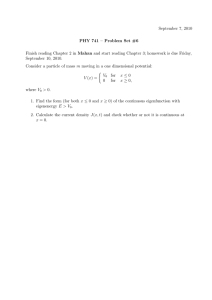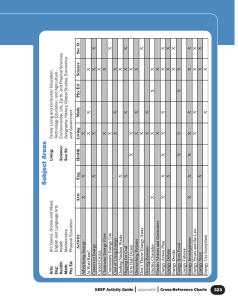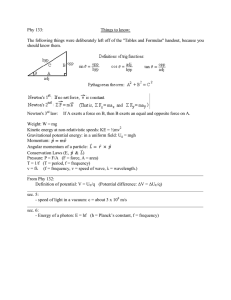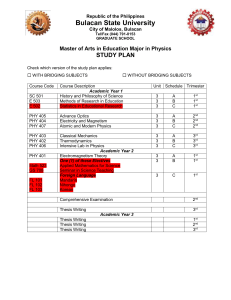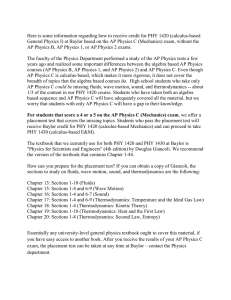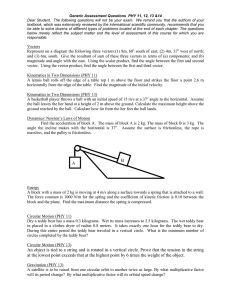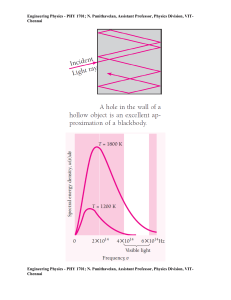GENERAL COLLEGE PHYSICS I-II
advertisement
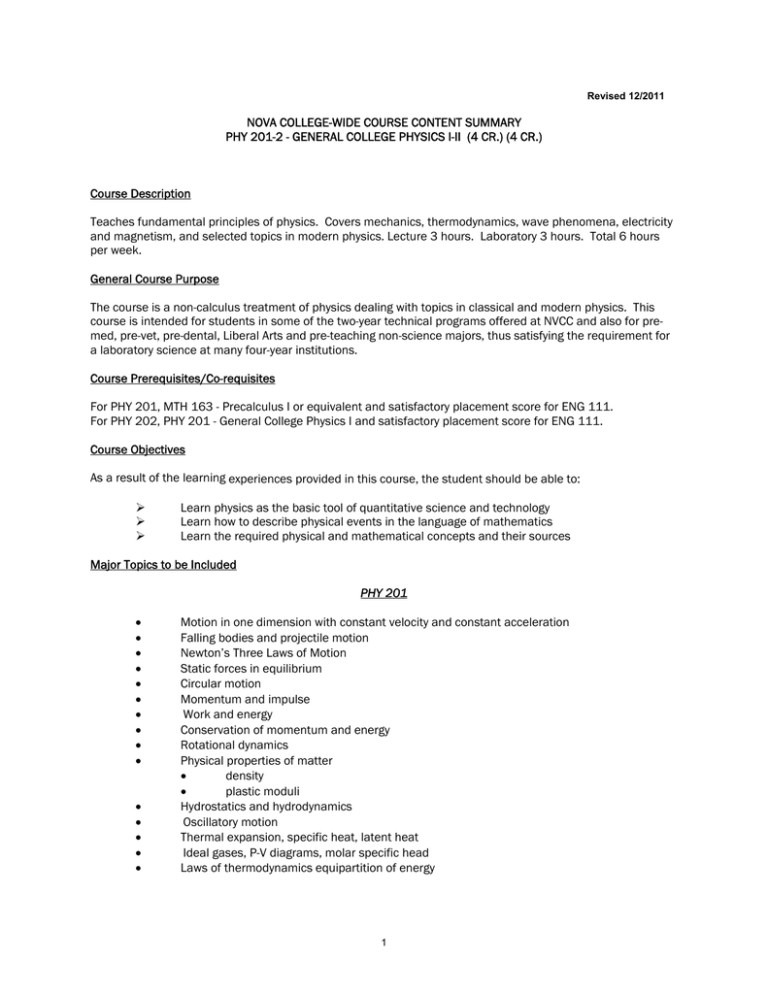
Revised 12/2011 NOVA COLLEGE-WIDE COURSE CONTENT SUMMARY PHY 201-2 - GENERAL COLLEGE PHYSICS I-II (4 CR.) (4 CR.) Course Description Teaches fundamental principles of physics. Covers mechanics, thermodynamics, wave phenomena, electricity and magnetism, and selected topics in modern physics. Lecture 3 hours. Laboratory 3 hours. Total 6 hours per week. General Course Purpose The course is a non-calculus treatment of physics dealing with topics in classical and modern physics. This course is intended for students in some of the two-year technical programs offered at NVCC and also for premed, pre-vet, pre-dental, Liberal Arts and pre-teaching non-science majors, thus satisfying the requirement for a laboratory science at many four-year institutions. Course Prerequisites/Co-requisites For PHY 201, MTH 163 - Precalculus I or equivalent and satisfactory placement score for ENG 111. For PHY 202, PHY 201 - General College Physics I and satisfactory placement score for ENG 111. Course Objectives As a result of the learning experiences provided in this course, the student should be able to: Learn physics as the basic tool of quantitative science and technology Learn how to describe physical events in the language of mathematics Learn the required physical and mathematical concepts and their sources Major Topics to be Included PHY 201 Motion in one dimension with constant velocity and constant acceleration Falling bodies and projectile motion Newton’s Three Laws of Motion Static forces in equilibrium Circular motion Momentum and impulse Work and energy Conservation of momentum and energy Rotational dynamics Physical properties of matter density plastic moduli Hydrostatics and hydrodynamics Oscillatory motion Thermal expansion, specific heat, latent heat Ideal gases, P-V diagrams, molar specific head Laws of thermodynamics equipartition of energy 1 Kinetic theory, entropy Wave motion Sound PHY 202 Coulomb’s Law Electric fields, electric potential energy Capacitors DC circuits, Ohm’s Law, Kirchhoff’s Law Magnetic forces, magnetic fields Induced voltages Inductance AC circuits Electromagnetic waves Geometrical optics Interference and diffraction Quantum physics Atomic physics Nuclear structure and energy 2
